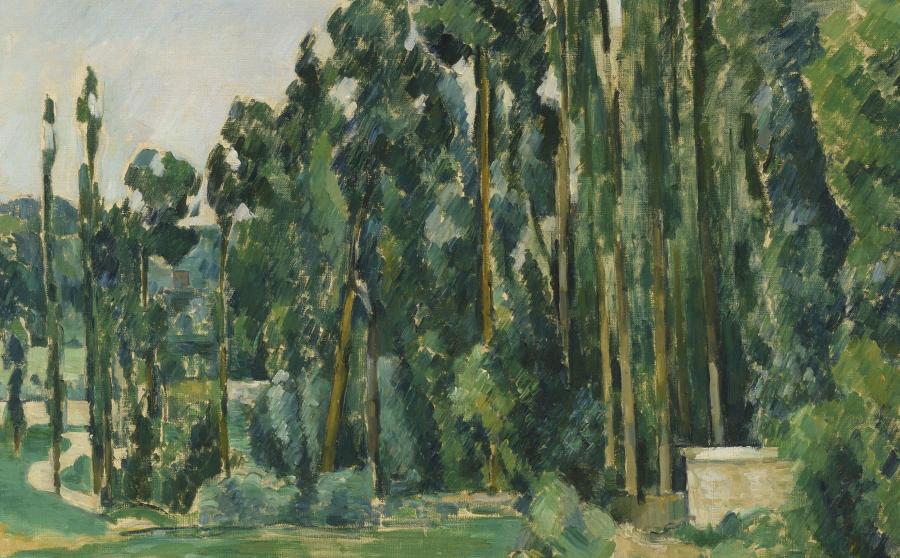Poplars
Information sur l’artiste
Paul Cézanne [Aix-en-Provence, 1839 - Aix-en-Provence, 1906)]

Les Peupliers, vers 1879-1880.
Image © Lyon MBA - Photo Alain Basset
This landscape is proof of Paul Cézanne's admiration for the work of his older contemporary Camille Pissarro, who invited him to come and live in Pontoise, an area to the north-west of Paris where the cost of living was cheaper than in the capital, after his son was born in 1872. Pissarro and Cézanne then began a true artistic exchange.
The location shown in this work had been painted by Pissarro five years earlier from a similar perspective: it features the wall surrounding the park of the Chateau de Marcouville on the edge of the river Viosne, near the hamlet of Pâtis. However, in this work Cézanne moves away from the Impressionist methods he and his friend shared towards an artistic vocabulary which is entirely his own. True to his desire to "do Poussin again after nature", the artist appears to arrange this landscape. The fact that he focuses on a man-made woodland of poplars is significant: the vertical lines create a geometric effect, an almost impenetrable screen – this is a world where order rules. The visual information he absorbs is filtered and rearranged. The composition is devoid of anecdotal details. The river, like the sky, is evoked merely by a plain sheet of colour with no hint of transparency.
Circa 1879-1880
Oil on canvas
H. 65; L. 81.5 cm
Long term loan from the Orsay Museum in 2015
Inv. D 2015.2.1





